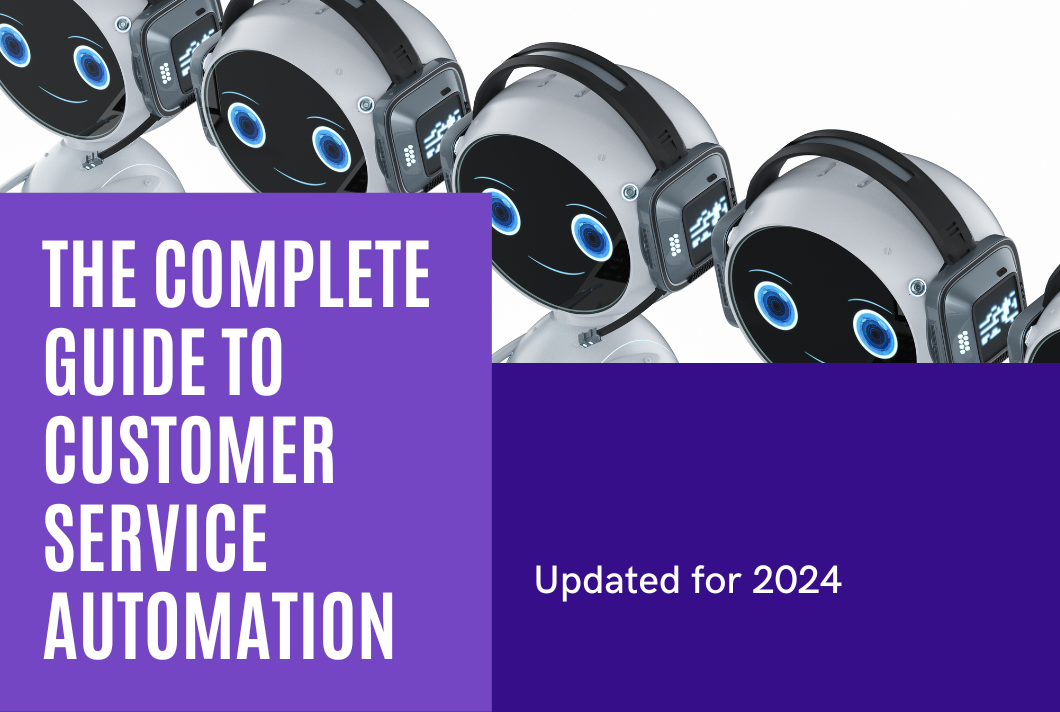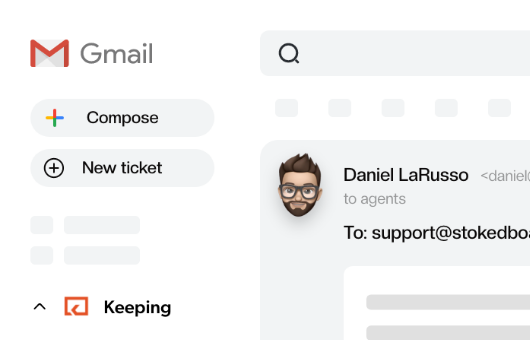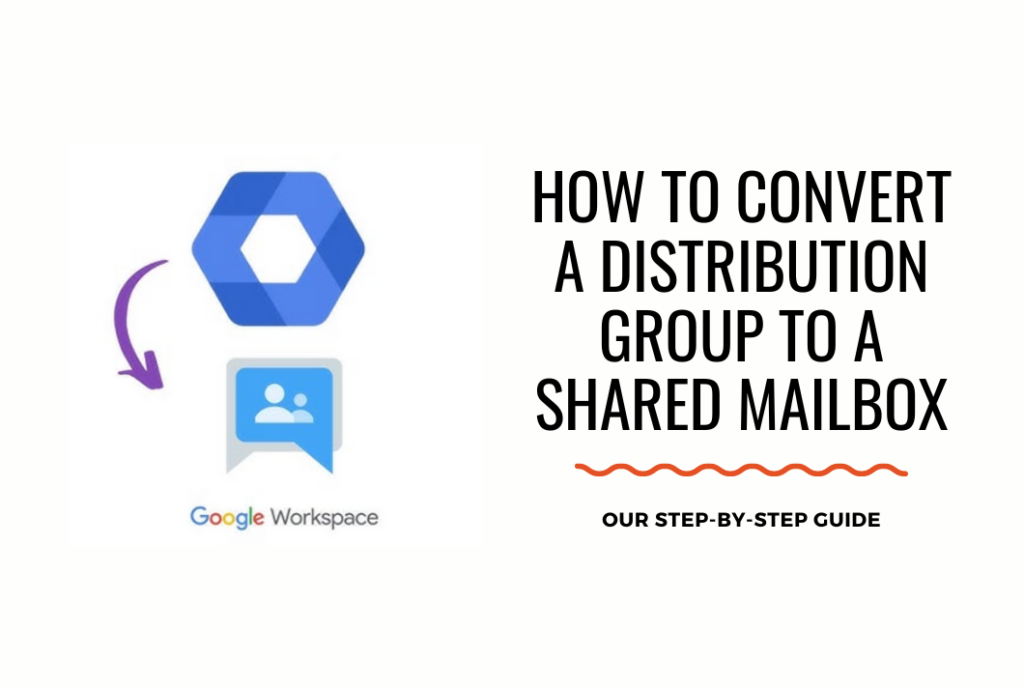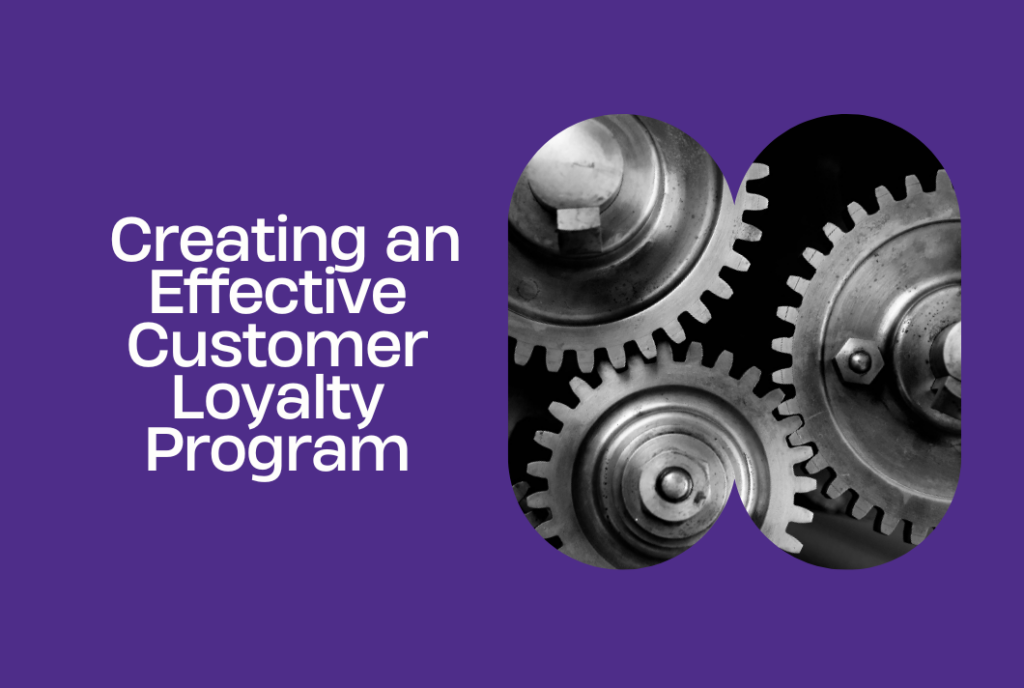
The Complete Guide to Customer Service Automation
Wondering whether you could automate customer service? See how to do it from this guide to customer service automation.
Ultimately, customers want timely, human service from businesses – but that doesn’t mean you can’t augment the experience with customer service automation.
Employ the power of tools like AI to support customer service to increase the quality of customer service and manage costs significantly. Ticketing tools, chatbots, knowledge bases, and live chat can all automate support teams and enable you to help more customers.
In this post, you’ll learn everything about customer service automation and find out how to implement it in your organization.
What is customer service automation?
Technology has changed our work so much, hasn’t it? Thanks to various tools, sometimes we can assist customers even if we – customer service agents – aren’t even present in the interaction.
Automation technology is the way to reach customers directly when agents aren’t available. You can also get through more tickets than would otherwise be possible. There are a range of solutions available that mean you can automate customer service no matter the size of your business. Automation can be customer-facing or be used by agents behind the scenes.
Though it can be a source of frustration for customers, automated customer service can present an opportunity for better service. You can add value to the customer experience without increasing costs in the long term.
Focusing on value is critical for businesses that want to succeed. Nowhere is this more important than in customer service, where costs can quickly spiral out of control. Remember, customers will always have questions and issues. If you automate customer support, this means you remove the need to intervene or you employ a combination of humans and technology.
If you forced customers to wait on the phone for an agent, queues would become impossibly long. Customers would soon start complaining about your business online, and you’d lose business. Automation in customer service can provide the answer when supporting large numbers of customers.
So automation usually doesn’t mean cutting customers off from your agents but providing more ways for customers to obtain help. This is especially important during busy times or out-of-office hours.
Common ways to automate customer service
Automation encompasses several aspects of customer service that you’re probably already familiar with.
Automated ticketing tool
What’s the most indispensable tool for customer service? We’d have to say your customer service ticketing system. The whole point of using a ticketing system is to automate some of the processes typically used in the customer service department. For example, you can assign tickets or apply tags. So, ticketing tools that can offer these automations should be higher up your list when you decide which option to pick.
A subset of this type of solution is email automations. These make managing your email tickets much easier. Automations are built natively into your email ticketing system. They perform functions such as automatically triaging emails, assigning them to agents or departments, adding tags or sending to the archive.
If you’re not using a ticketing tool, you should be because: 43% of businesses use ticket automation, and 71% of support departments want help with automating manual tasks like tagging and routing. Automated ticketing tools help with this immensely.
Live chat
Live chat is a great way to integrate automation in customer service because agents and customers are chatting in real-time. Live chat tools could automatically detect the right answer for customers when they get in touch with common queries. They can lighten the load on agents who are undoubtedly handling multiple chats at once.
Chatbots
Chatbots are well-known for their ability to help customers automatically and are on the rise. They use natural language processing and machine learning to field answers to common queries. What’s more, chatbots are becoming more and more intelligent, with the ability to sense customer intent and hand off to agents if the AI chatbot can’t help. The capabilities of AI mean that chatbots become more and more human. They can “intelligently” learn from past interactions to give customers a better experience.
Knowledge bases
Providing self-service content is an essential part of a customer service strategy supported by automation. Not only can you create content in a knowledge base that is automatically served to customers, but AI can help you dynamically improve the search experience for customers looking for answers. AI offers up results in search engines when customers search for your company or products.
Automated translations
It’s likely that your customer service team supports a global customer base. So, you cannot simply mandate that customers communicate in English. 60% of customers expect to receive support in their native language. Automatically translating conversations in your ticketing system means that agents can interact in multiple languages. You’re providing multilingual support at a fraction of the usual cost of employing more agents.
IVR
IVR (Interactive Voice Response) software is an automated telephone system used in customer service. You can greet customers, direct them to the right department, answer basic questions, and even take payments. Customers use their voice or DTMF tones on a keypad to interact with the computer. It then responds with pre-recorded or dynamically generated messages.
Triggered actions
Automated workflows allow you to follow up with customers after certain interactions automatically. For example, customers might view a product on your website, receive a message on their birthday, an automated response to opening a ticket, or a follow up after a support call. Customers usually know these actions are automated and are happy to engage with them as part of the customer experience.
What are the benefits of customer service automation?
Customers genuinely expect you to offer the latest developments in customer service technology – as long as they feel they’ve received the best experience possible. On the business side, customer service is filled with repetitive mundane tasks that sap the morale of your agents. That’s why automations can help agents to perform their roles much better. No customer wants to wait for an agent when they can find the answer in a knowledge base, for example.
The rise of customer service automation by 58% means that any business with a customer service department is scrambling to get on board.
You can offer 24/7 service
By employing the power of automation, you’ll be able to significantly increase your capacity to provide support to customers around the clock. Chatbots and knowledge bases can provide answers to customers even when agents are unavailable. Therefore you’ll give much better coverage, with fewer customers becoming frustrated and leaving your business. Your customers can be based in any timezone or even have a question in the middle of the night. With automation, they will still be able to get an answer.
It may not be realistic for your business to use a follow the sun model in customer service. In this case, your only option for providing coverage is to use automation to supplement your human agents. You’ll be able to deliver the level of service offered by some of the larger companies without distributing teams in different time zones or paying agents to work unsociable hours.
Minimize problems with queues and office hours when customer service teams employ automation technologies.
You can make your budget go further
Employing agents to support customers is the most costly part of customer service. Being able to do more work with fewer hands means automation technology can make your budget stretch further.
Automating certain actions like routing means you need fewer agents to perform the same level of service. You can support higher numbers of customers without increasing the cost of your headcount.
Technology can perform the same tasks that would require teams of agents to complete successfully, such as answering repetitive queries. You’ll get fewer errors than you might expect from human intervention. Customer service teams are more productive when they spend less time correcting errors.
Putting out fewer fires caused by human error and improving the customer experience means customers will be much happier.
You can deliver a higher quality of customer service
80% of customers expect AI and bots to improve experiences.
When you have bots, knowledge bases, and ticketing systems working for you, you can combine all of their features to achieve a much higher quality of customer service.
Customers appreciate being directed to the knowledge base if they can obtain a quick answer. Bots can be extremely intelligent in answering questions, especially when they are simple and repetitive.
Businesses using the latest technologies provide a better customer experience when implemented well. If AI helps a customer solve a problem in seconds with the minimum of fuss, customers will be delighted and feel more loyal to your business. This contrasts the experience of waiting around and feeling frustrated, all the while explaining your problem to multiple agents.
67% of customers prefer self-service as the channel to solve customer service problems. This means automation is your best friend when it comes to customer satisfaction.
Agents will be happier with the experience
Not only can you accomplish more, but agents will be happier when you take repetitive and mundane tasks off their hands. Automations are there to free up your agents to use higher-order skills to serve customers. Automation is actually an investment in customer service in the long run, all because generative AI has a positive impact on productivity for customer service workers.
The true purpose of automation is to augment existing roles rather than replace them. Customer service teams that sensibly use these technologies will be able to make their workers happier. It’s critical to prevent agents from suffering from queue fatigue, burnout, and other related conditions arising from answering the same repetitive customer inquiries.
Recognizing that key skills cannot be automated, agents and customers both benefit from the technology.
Service will be faster and more efficient
As skilled as your human customer service agents might be, they will never be as fast as automation. AI and other types of automations can help customers virtually instantly, eliminating wait times and queues. You can simply serve customers and let them get on with their day. When you make the effort to provide support for customers quickly, they will be more forgiving when things go wrong.
It’s a fact that 72% of customers demand immediate service in today’s technology-first culture. Customers have no patience for delays, so you should not force customers to endure them. Best of all, while automation supports customers with common queries. Agents have more time to get back to customers approaching them with more complex problems. Automation also helps you save time in back-end processes.
Customers are happier with automation when it enhances their lives.
Boosts the consistency of customer service
Since computers will give the same answers to customer questions every time, you can worry less about agents giving contradictory answers. As long as you program your bots properly (even to the point of hiring a professional chatbot designer) or fill your knowledge base with the right information, then customers will have a more consistent experience. Therefore, they will be more satisfied with your service.
Automated customer service tools support customers the same way, always.
What are the drawbacks of customer service automation?
Since the data shows that 90% of customers prefer to get their customer service from a human, there are definitely some limits to customer service automation. Automating a proportion of your customer service processes will still require significant time and effort to implement. You still need humans to oversee technology because you can’t simply unleash bots and the like on your customers.
You risk alienating customers
Sometimes, customers redirected to customer-facing technology might assume that you don’t want to talk to them. While no customers would question the efficiency of using automation in your ticketing tool, being forced to talk to a bot or being limited only to accessing a knowledge base might result in customers feeling alienated.
Pro tip: present automation as a viable alternative option to human service. If you can, emphasize that you want to expand and enhance what you can offer. Your agents are still available, but customers have the opportunity to avail themselves of machine help. Make it clear when you are asking customers to interact with automated tools and provide the option to reach out to a human.
Customers are frustrated not to reach a human
When customers can’t reach a human, they may become disappointed with your service. This certainly won’t be the majority of your customers, but there are those few who will only consider dealing with one of your agents. The problem with automation is that it can only solve problems that have been known to the customer service team, and some situations may require more complex troubleshooting or decision-making.
Pro tip: make your business hours very clear so customers know when they can get in touch with your customer service team. Make sure your agents are trained in your policy of tiered service so you can escalate issues when bots or knowledge bases don’t help.
Customers are unable to find answers
Automation can be amazing for customers who have obvious questions. Unfortunately, when customers don’t find an answer, it can feel like your solution has failed. While the majority of queries can be solved through automation, there will always be times when your information repository doesn’t have it covered.
Pro tip: don’t make your customers jump through many hoops before they can reach a human during the customer journey. Step into your customers’ shoes and guide them towards obvious categories of problems before suggesting that they take it to live chat, phone, or email.
Agents resent the intrusion
Although customer service automation in the back end is meant to help your agents, some individuals may feel like their jobs are threatened if machines are more efficient than they are. With 43% of businesses planning to reduce their workforce due to automation, according to the World Economic Forum, the threat is certainly real.
Pro tip: give your staff ongoing training to make sure they have the necessary skills in an evolving world dominated by AI. Automation should be a way to support your staff, not replace them. Agents must be able to progress to increasingly senior roles with more responsibility as machines are automating more of the entry-level work.
Machines can’t pick up on nuance (yet)
While automation can be really helpful in responding to basic customer queries, if there’s any kind of nuance, then the machine is likely to get the response wrong. This is changing as the rise in generative AI is making computer-based responses more accurate and human-like.
Pro tip: make it easy for customers to “speak to a human” or risk offending them with insensitive answers to complex problems. Forcing customers to input their problems into unwieldy forms or bots increases frustration if they already know they will need a human to help them.
Automation is not the answer to everything, but it can significantly augment your customer service if you implement it correctly. As long as your service is oriented primarily toward solving customer problems, you’re definitely on the right track.
Common pitfalls to avoid when implementing customer service automation
Once you’ve decided that you want to implement automation in customer service, you should be aware of the most common pitfalls that most businesses face in their strategy.
Over-reliance on automation
An automated tool paves the way for many possibilities, but it can’t do everything. Stonewalling your customers by hiding behind automation is never a good approach. Agree that quality customer service will always be a cornerstone of a thriving business. Automation should be interwoven with human service and implemented strategically to provide the best experience for customers. Combine this with regularly collecting and reviewing customer feedback.
Failing to train your agents
When agents understand that they are valued, it’s because you have invested in their skills and ongoing education. Agents will be overseeing the success of the automations, whether that’s reviewing the quality of your bot’s answers or organizing tickets that have been automatically sorted. Agents need to fully understand the role of automation in the customer service department, and be able to revise and update processes as necessary to keep agent attrition under control.
Not disclosing automation to customers
Most customers don’t mind automation as long as you’re honest with them about the fact that they’re interacting with machines. Giving the impression that they can reach a human but then preventing them from accessing customer service is just as bad as not offering customer service at all. The best businesses use automation openly to supplement their human customer service and supply customers access with easy answers.
What do customers expect from business automation?
If automation is visible to customers, such as when they are interacting with chatbots or a knowledge base, you need to make it clear to customers that they are not dealing with a human. Being dishonest with customers about the service they can expect to receive endangers the trust they have in your business and certainly doesn’t encourage loyalty.
Customers expect transparency and that you will respect their time. They don’t mind using bots or agents using automatic translations but you should be clear about the limitations of such technology. Ultimately, your customers should be able to reach a human relatively easily if necessary. They expect businesses to enhance their customer service with automation, not replace it.
They want automation to make finding answers quicker. This means that businesses need to make information more available. Businesses should be aiming to hit the sweet spot between automation and human service. Then, customers will know you value them.
Examples of companies automating customer service

H&M uses a chatbot for customers to get help or even search for products that might suit them. H&M makes it easy to switch to email if the chatbot’s no help. Therefore, they enable customers to connect quickly to help no matter what they’re seeking assistance with.

AirHelp is a platform for helping customers to obtain compensation for their canceled or delayed flights. They’ve provided a chatbot that connects customers with possible categories for support. An intuitive user interface completes the whole experience of using AirHelp.
How to automate customer service successfully
1. Identify metrics to improve or goals to hit in customer service
Before doing anything with technology you need to decide what areas you want to improve in your customer service department. This could be enhancing response times, scaling your operations, or increasing productivity. You might already be doing great in customer service, but there’s always room for improvement. Customers appreciate innovation and development from companies they’re loyal to.
You can look at your competitors and see how they are beating you when it comes to customer service. Do market research. Think of how you could help customers in similar or better ways.
Metrics are important for several reasons. Setting targets for where you want to be and working out what it would take to get there is the first step in customer service automation. The areas you want to improve should match changing customer expectations – such as a growing preference for self-service – where possible.
2. Decide on what areas can be automated
Although it would be great if everything could be automated in customer service, the reality is that automated customer service tools can only improve a few specific areas. For example, if your team is struggling to stay on top of email, using ticketing automation in Keeping can help you manage a higher volume of inquiries. If your team is phone-heavy, an IVR system might be the way to go.
Responding to customer complaints, on the other hand, cannot be automated. You always need an agent with authority to intervene and provide a solution.
Needing to find opportunities to connect more with customers may lead you to decide that you don’t want to automate some parts of your operation. If you want to onboard new customers and check in with them regularly, it might be necessary to continue having your CSMs schedule calls with customers – especially the most high-value ones.
3. Consider your budget carefully
Customer service automation has the potential to cut long-term costs but may require an initial upfront investment. That’s why you can apply a graded approach to automating customer service. This involves implementing AI to replace certain tasks until the benefits are well-established. Trying to do everything at once is a recipe for failure. When you’ve successfully lowered some of your costs for customer service, you can think about investing in more automations.
4. Choose what scenarios to automate
You’ll need to make a plan for the scenarios you want to automate before choosing the appropriate tools. For example, if a customer gets in touch wanting to know more about your products, you can set up a trigger using a chatbot that will provide them with more information. Think about where you want your customers to go and how automation can get them there.
Of course it’s not possible to automate every possible scenario. The solution is to choose the main ones that will earn the highest returns compared to dealing with them manually. Understood what each tool is capable of before setting your sights too high.
5. Implement an automated ticketing system
As we’ve already discussed, an automated ticketing system is the way forward if you’re a business that wants to implement rules based on conditions for dealing with customer inquiries. You can install a ticketing system on top of traditional email to add extra features. Incorporating these will definitely make your customer service processes much more efficient.
If your agents have been struggling with unwieldy email tools for a long time, you’d expect it to take a while to get used to a solution like Keeping. Not so – ticketing systems such as Keeping are easy to learn and provide a simple way to automate many aspects of your customer service.
6. Connect your channels together
An integrated omnichannel experience is best for customers who want a holistic sense of service from your customer service team. If a customer takes advantage of knowledge base automation but ends up transferring to an agent, the agent should know the journey the customer has taken to get there. Always avoid asking them to repeat information if you can.
Achieving this means connecting your channels together so that data is transferred. You should do this even when customers are coming from multiple touchpoints. Customers don’t care about the inner workings of your business – they only care about getting their problems solved.
7. Train your agents in the new technology
Adopting new technologies like automation won’t work unless you get your agents on board through the proper training. Considering that 72% of support automations are built by employees working in the department, some of your agents will need to manage the implementations. On the other hand, others will need to work with automations on the ground and understand the technology as they help customers.
Empowering your agents to work with live chat, ticketing systems and knowledge bases means you can offer better responses to customers, making the most of your technological investment.
How can Keeping help with customer service automation?
If you’re interested in automation from a ticketing system then Keeping can help. We have specifically designed Keeping to automate routine tasks for you such as assigning tickets to agents, setting priority for tickets and adding tags.
Conditional rules
Increase the capacity of your help desk with conditional rules to perform actions based on specific conditions that trigger a response.
For example, when you receive emails containing particular subject lines you can route them to an individual agent or department. This ensures it is dealt with immediately instead of waiting in the main inbox. You can change your conditional rules at any time to ensure your inbox remains dynamic and reflects changing processes.
Rules can also reduce the clutter in your inbox by blocking spam based on the presence of particular keywords. On the flip side, you can use the rules to move important emails to the top of the inbox so you don’t miss them. Manually combing through the inbox wastes time and is unnecessary when you have a tool like Keeping to help you.
SLAs
SLAs are integral to any successfully functioning customer service team. You can set them in Keeping to make sure that your team is adhering to agreed-upon standards. When an SLA is violated, you can notify someone on your team so they can address the situation.
What is the future of customer service automation?
By 2025, AI will power 25% of customer interactions, and global spending on AI will surpass $301 billion by 2026. It’s not so much a matter of if automation will take over as much as when. That’s why businesses need to adopt these new technologies as early in the game as possible.
The number one fastest growing support channel is email, with its potential for using generative AI to automate responses. This means that emphasizing email for customer support is a good idea if you want to leave the door open for the latest innovations. Keeping is an excellent choice in this regard.
AI systems will become better at personalizing the customer experience through analyzing vast sets of customer data. Generative AI will become more prevalent through creating automated content to answer customer inquiries, ultimately blurring the line between automation and human support.
Wrapping up
Customer support automation brings many new possibilities for improvement for businesses. It creates a better customer experience when you do it well. Automation is nothing new, but recent developments (especially in artificial intelligence such as generative AI and its application in customer service) is a new horizon for customer service teams. Combining automation with human interaction relieves pain points in customer service and enables you to help more customers.
You can use automations in either a customer-facing context or behind-the-scenes for your agents to relieve the monotony of much of customer service. Integrating multiple support channels and investing in automated ticketing systems are two key trends that businesses should consider when updating their customer service operations.
Deflecting many common queries with automations helps both your agents and customers, liberating your resources for more important functions. Customers want the option to speak to an agent but they don’t want to be forced into waiting for a human.
Join 150+ teams that are sharing inboxes with us
The easiest way to upgrade your shared Gmail account. There’s no credit card is required.






